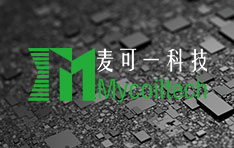Categorías de blogs
Mensajes recientes
Etiquetas de blog

Un transformador es un dispositivo eléctrico fundamental que utiliza el principio de inducción electromagnética para convertir la corriente alterna (CA) entre diferentes niveles de voltaje. Gracias a sus características de alta eficiencia, funcionamiento estable, regulación flexible de voltaje y aislamiento confiable, se aplica ampliamente en diversos campos, como la transmisión de energía, la producción industrial y el suministro eléctrico civil, desempeñando un papel fundamental en la distribución, regulación y utilización de la energía eléctrica.
Hemos resumido los siguientes roles de los transformadores en las unidades de control:
1. Conversión de Tensión y Transmisión Eficiente: Los transformadores pueden elevar o reducir la tensión según las necesidades reales. En el sistema eléctrico, los transformadores elevadores elevan la electricidad de baja tensión generada por las centrales eléctricas a alta tensión, reduciendo significativamente las pérdidas de línea durante la transmisión a larga distancia. Por ejemplo, la producción de electricidad de las centrales eléctricas, que es de decenas de kilovoltios, puede elevarse a cientos de kilovoltios para la transmisión a larga distancia. Los transformadores reductores, por otro lado, reducen gradualmente la alta tensión a niveles adecuados para la producción industrial y el uso residencial. Por ejemplo, la alta tensión de 110 kilovoltios puede reducirse a 10 kilovoltios para la distribución eléctrica regional y a 380 V/220 V para uso doméstico y comercial, garantizando así un suministro seguro y estable de energía eléctrica a los usuarios finales.
2. Aislamiento eléctrico y garantía de seguridad: Las bobinas primaria y secundaria de un transformador están acopladas magnéticamente, pero aisladas eléctricamente, lo que bloquea eficazmente la interferencia y la conducción de fallas entre circuitos. En equipos médicos, los transformadores de aislamiento previenen el riesgo de descarga eléctrica de los pacientes debido a fugas de corriente, garantizando así la seguridad médica. transformador de aislamiento eléctrico Se utiliza, por ejemplo, en equipos de resonancia magnética (RM). El dispositivo de RM obtiene imágenes humanas mediante un potente campo magnético y pulsos de radiofrecuencia, y su funcionamiento implica sistemas electrónicos complejos y sensores de alta precisión. El aislamiento eléctrico entre las bobinas primaria y secundaria del transformador de aislamiento separa la fuente de alimentación principal del dispositivo de RM (como la alimentación de 380 V CA) de las partes en contacto con el cuerpo humano (como la consola de operación del paciente y el módulo de monitorización de constantes vitales). En los dispositivos de comunicación, los transformadores pueden suprimir las interferencias electromagnéticas de la red eléctrica, proporcionando energía limpia y estable para instrumentos de precisión y evitando impactos en la transmisión de señales.
3. Adaptación de potencia y regulación de carga: Al ajustar la relación de espiras del transformador, se logra una adaptación precisa de la potencia entre la fuente de alimentación y la carga, mejorando significativamente la eficiencia de transmisión de energía eléctrica. En la producción industrial, para motores con diferentes requisitos de potencia, los transformadores pueden ajustar la tensión y la corriente de salida según sea necesario, permitiendo que los motores funcionen en su estado óptimo y reduciendo el consumo de energía. En el campo de la generación de energía a partir de nuevas fuentes de energía, los transformadores pueden optimizar la adaptación de la potencia entre aerogeneradores, centrales fotovoltaicas y la red eléctrica, mejorando así la tasa de utilización de energía limpia.
4. Estabilización de Tensión y Supresión de Fluctuaciones: Ante fluctuaciones de tensión en la red eléctrica, los transformadores de conmutación de tomas en carga pueden ajustar automáticamente la tensión de salida en tiempo real para mantener un suministro eléctrico estable. En zonas montañosas remotas con tensión inestable, estos transformadores garantizan un consumo energético normal para los residentes. En centros de datos con requisitos extremadamente altos de calidad de suministro eléctrico, pueden prevenir eficazmente la inactividad de los servidores y otros fallos causados por fluctuaciones de tensión, protegiendo así la seguridad de los datos y la continuidad de las operaciones comerciales.
5. Conversión de fase y aplicaciones especiales: Además de los transformadores monofásicos y trifásicos comunes, algunos transformadores de diseño especial pueden lograr la conversión de energía eléctrica entre diferentes fases para satisfacer las necesidades de escenarios específicos. Por ejemplo, en el transporte ferroviario urbano, los transformadores de equilibrio pueden convertir la electricidad trifásica en electricidad monofásica, adecuada para la tracción ferroviaria. En la industria metalúrgica, los transformadores especiales para hornos de arco eléctrico pueden proporcionar energía eléctrica de alta corriente y baja tensión para satisfacer los requisitos especiales del proceso de fundición.
En conclusión, los transformadores no solo permiten la conversión flexible de niveles de tensión en las unidades de control, sino que también desempeñan un papel crucial en diversos aspectos, como el aislamiento eléctrico, la regulación de potencia y la estabilidad del suministro eléctrico. Son componentes fundamentales para la construcción de sistemas de energía inteligentes modernos y para garantizar el funcionamiento normal de diversos dispositivos eléctricos.
Nos especializamos en la fabricación de una gama completa de transformadores de alta calidad, incluyendo transformadores de alta frecuencia, transformadores de baja frecuencia, transformadores encapsulados, etc. Nuestros productos se utilizan ampliamente en campos como la ingeniería eléctrica, el desarrollo de nuevas energías, los edificios inteligentes y la automatización industrial. Gracias a nuestra tecnología profesional y a nuestro completo sistema de servicio, podemos personalizar los transformadores para nuestros clientes. Por ejemplo, Transformadores para pilas de carga de vehículos de nueva energía y transformadores de conmutación Para luces LED. Ya sea para pequeños electrodomésticos o grandes productos aeroespaciales, podemos satisfacer diversas necesidades. Si tiene alguna pregunta, no dude en contactarnos.